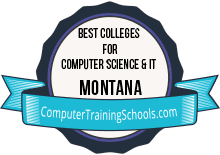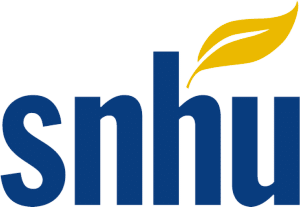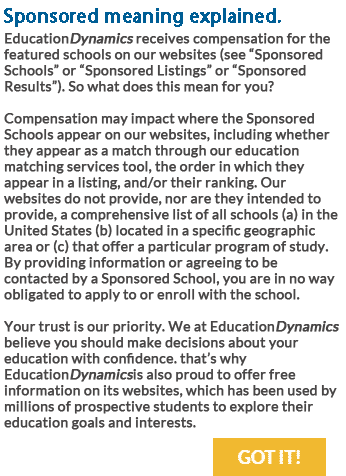The tech industry in Montana reached $2 billion in revenue in 2018 — double the amount of revenue it earned in 2016. And according to a report by the University of Montana’s Bureau of Business and Economic Research, the tech industry in the state is growing nine times faster than the rest of Montana’s economy.
This growth can be exciting for students pursuing computer science degree programs in Montana, as it shows that they are likely to find meaningful employment in the mountain west’s expanding tech industry upon graduation.
Montana’s Technology Education Initiatives
The Treasure State, through a combination of government and business alliances, strives to support and increase the technology industry’s presence. And in order to do so, it is also important that there are initiatives in place to prepare students for work in this 21-century industry, such as increasing the number of graduates of computer science degree programs in Montana. Here are some of the initiatives in place:
- Developing computer science standards: Montana began to develop computer science standards across its K-12 schools in July 2018. These standards are continuing to evolve and improve computer science education in the state — something that may eventually lead to a desired increase in students who pursue college degrees in technology.
- Treating computer science as an important subject: A policy was passed to allow computer science to count as a science, math, elective, or CTE graduation requirement in Montana’s schools. Some districts now require their students to complete a computer science course in order to graduate from high school.
- Promoting the use of technology in rural schools: Teachers in rural schools in Montana can attend workshops and receive training on how to use technology in their classrooms and benefit students.
- Preparing graduates for careers: Tech Skills for Tomorrow, is a workforce initiative launched in October 2019 and led by the University of Montana, in partnership with organizations like the Montana High Tech Business Alliance, Missoula College, and Amazon Web Services. It aims to help more students be ready to begin careers aligned with Montana’s high-tech business needs.
Southern New Hampshire University
- Some of the nation’s most affordable tuition rates, from a private, nonprofit, NEASC accredited university
- Qualified students with 2.5 GPA and up may receive up to $20K in grants & scholarships
- Multiple term start dates throughout the year. 24/7 online classroom access
- Offering over 200 online degree programs
Purdue University Global
- Experience world-class education online with more than 175 programs at associate’s, bachelor’s, master’s and doctoral levels.
- Apply eligible work experience and prior college credits toward up to 75% of your undergraduate degree.
- You have the option of trying out a Purdue Global undergraduate program for an introductory 3-week period. There’s no cost beyond the application fee.
- Competency-based ExcelTrack™ programs may allow you to earn your degree faster and for less money
Best Colleges for Computer Science and IT in Montana

In order for Montana’s technology industry to continue to grow, an educated workforce is vital. Prospective students who are interested in pursuing computer science programs in Montana can choose from a variety of institutions. Below is a list of the best IT schools in Montana.
| Ranking | School Name | In State Avg. Undergrad Tuition | % Receiving Financial Aid | Retention Rate |
|---|---|---|---|---|
| 1 | George Mason University | $9,060 | 76% | 87% |
| 2 | Great Falls College Montana State University | $2,752 | 80% | 43% |
| 3 | The University of Montana | $5,347 | 89% | 68% |
| 4 | Montana Technological University | $5,707 | 93% | 73% |
| 5 | Salish Kootenai College | $5,076 | 77% | 58% |
| 6 | Rocky Mountain College | $27,982 | 100% | 67% |
| 7 | Helena College University of Montana | $2,608 | 75% | 56% |
| 8 | Montana State University Billings | $4,485 | 87% | 54% |
| 9 | Carroll College | $34,506 | 100% | 81% |
| 10 | University of Providence | $24,968 | 100% | 52% |
Spotlight on Computer Sciences Schools in Montana
These schools offer some of the most noteworthy IT degree programs in Montana.
- Montana State University: One of the options at MSU is the “seamless” Bachelor of Science and Master of Science in Computer Science program. This accelerated plan can give students the opportunity to earn their bachelor’s and master’s degree in five years. The curriculum includes a number of electives, allowing students to design a program that caters to their unique interests.
- University of Montana: At UM, students can pursue a Bachelor of Science in math and computer science. To earn this degree, they must complete 30 credits in mathematical sciences and 30 credits in computer science. A 12-credit Certificate in Computer Programming is available as well.
- University of Providence: UP’s computer science major, which culminates in a bachelor’s of science degree, focuses on the field of informatics. Students at this private Catholic institution in Great Falls can expect to learn about data management, systems analysis and programming. Concentrations in networking or security are available.
IT Salaries and Career Outlook in Montana
The Bureau of Labor Statistics has discovered that software developers — systems and applications — as well as web developers and computer network support specialists are a few of the fastest-growing tech occupations in the state.
St. Patrick Hospital in Missoula, Glacier Bancorp, Inc., a regional banking company, and Semitool, a manufacturing equipment provider are typically interested in hiring these types of professionals.
| Career | Annual Median Wage |
|---|---|
| Information Security Analysts | $69,310 |
| Database Administrators and Architects | $64,650 |
| Computer Network Architects | $88,890 |
| Web Developers and Digital Interface Designers | $53,350 |
| Computer Programmers | $74,730 |
| Computer Network Support Specialists | $54,510 |
| Software Developers and Software Quality Assurance Analysts and Testers | $83,030 |
| Computer Systems Analysts | $71,740 |
| Network and Computer Systems Administrators | $66,890 |
2019 Occupational Employment Statistics and 2018-28 Employment Projections, Bureau of Labor Statistics, BLS.gov.
Computer Science Scholarships for Montana Students
The following are some of the state-specific scholarships that may help computer science students in Montana save money on their education.
- J.R. Scholarship for Montana Computer Scientists: This award was designed for Montana high school graduates who plan to major in computer science at the University of Montana. Preference is given to those who have a minimum GPA of 3.0.
- Touch America Computer Science Scholarship: Juniors and seniors who are enrolled in a computer science program at the University of Montana may be eligible for this award.
- CodeMontana Scholarship: Eligible computer science students at Montana Tech may receive $1,000 per semester — for the first four semesters — as long as they maintain a B average.
- Zoot Scholarship Program: Computer science juniors at Montana State University-Bozeman may be eligible for an award as well as internship or employment at Zoot Enterprises. Awardees who continue to meet eligibility requirements may be able to renew the scholarship for a second year.
Additional scholarship resources can be found through our partner site, Schools.com’s scholarship database.
Montana Professional Organizations and Resources
- Association for Computing Machinery- Montana State University Chapter: MSU’s chapter of the ACM meets regularly to plan events, recruit new students enrolled in computer science programs in Montana, and reach out to local businesses for tours and career advice.
- Montana Telecommunications Association: The MTA partners with companies that provide advanced telecommunications services to business and residential consumers in Montana. Students interested in telecommunications careers may benefit from joining.
- Institute of Electrical and Electronic Engineers Computer Society- Montana Section: IEEE is a worldwide technical professional organization dedicated to advancing technology for the benefit of humanity. It hosts frequent educational events and conferences.
Sources
- 2019 State of Computer Science Education, CODE Advocacy Coalition, Accessed September 2019, https://advocacy.code.org/2019_state_of_cs.pdf
- A Rural Montana District Goes All in on Makerspaces, The Hechinger Report, Accessed September 2019, https://hechingerreport.org/a-rural-montana-district-goes-all-in-on-makerspaces/
- Association for Computing Machinery, Montana State University, Accessed January 2020, https://www.cs.montana.edu/acm/
- CodeMontana Scholarship for 2020, Montana Tech, Accessed January 2020, https://cs.mtech.edu/code-montana/
- Computer Science, University of Providence, Accessed September 2019, https://www.uprovidence.edu/explore-programs/undergraduate/majors/computer-science/
- CS-Math Combined Major, University of Montana, Accessed January 2020, http://hs.umt.edu/cs/undergraduate/csMathMajor.php
- Institute of Electrical and Electronic Engineers Computer Society- Montana Section, Accessed January 2020, http://ewh.ieee.org/r6/montana/
- May 2018 State Occupational Employment and Wage Estimates Montana, Bureau of Labor Statistics, https://www.bls.gov/oes/current/oes_mt.htm#15-0000
- Montana Tech Industry Generated Record $2B in Revenue in ’18, Great Falls Tribune, Accessed September 2019, https://www.greatfallstribune.com/story/news/2019/03/23/montana-tech-industry-generated-record-2-b-revenue-18/3258072002/
- Montana Telecommunications Association, Accessed January 2020, https://www.telecomassn.org/
- Seamless BS/MS in Computer Science, Montana State University, Accessed January 2020, https://www.cs.montana.edu/degrees_offered.html
- Scholarships, University of Montana, Accessed January 2020, http://hs.umt.edu/cs/scholarships.php
- UM launches new initiative to prepare workers for high-tech jobs, Missoulian, October 29, 2019, https://missoulian.com/news/local/um-launches-new-initiative-to-prepare-workers-for-high-tech/article_3751a77f-baf4-521c-9bb4-b70fa725ecdb.html
- Zoot Scholarship for 2020, Montana State University, Accessed January 2020, https://www.cs.montana.edu/scholarships/zoot-scholarship.html
To be included in the rankings, all colleges had to meet the following criteria:
- Be an accredited U.S. institution
- Offer either 2 or 4-year degree programs
- Be active in the 2016-17 school year
- Offer a degree in a technology-related subject
- Have awarded at least one degree in that subject in 2015-16
- Have reported data for all ranking variables listed below
Ranking variables:
- Related subjects, based on the number of relevant programs that are offered at any level
- Flexibility, based on number of relevant programs that are offered at any level via distance education
- Average in-state undergraduate tuition
- Percent of undergraduate students awarded federal, state, local, institutional or other sources of grant aid
- Average amount of federal, state, local, institutional, or other sources of grant aid awarded to undergraduate students
- Graduation rate
- Retention rate
Methodology Sources:
- Integrated Postsecondary Education Data System (IPEDS) 2016-17, National Center for Education Statistics, http://nces.ed.gov/ipeds/



